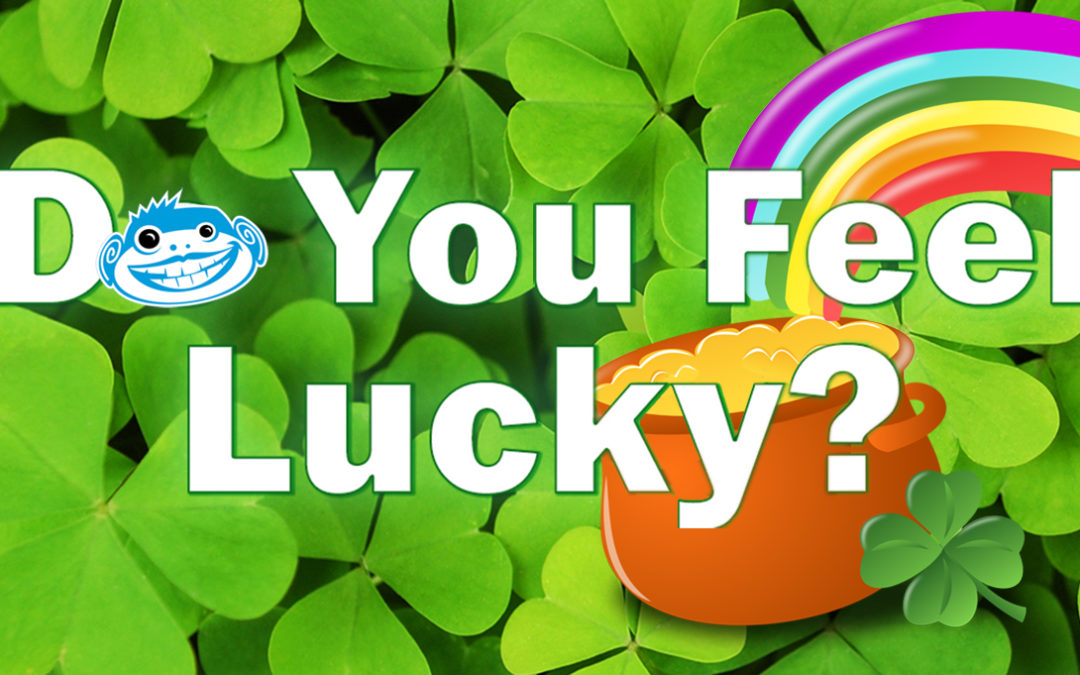Science Tells Us Luck is Real – and We Help to Create It!
Fresh on the heels of a 2020 that most of us would rather forget, writing about “luck” might seem like an odd topic. But, with St. Patrick’s Day fast approaching, the subject of luck is bound to come up in conversation.
In the spirit of St. Patrick’s Day, let’s explore where the expression “luck of the Irish” comes from. Here are two leading theories:
- According to IrishCentral.com, the expression dates to the 19th century gold and silver rushes in America where the saying was used to describe some of the most famous and successful miners who were of Irish and Irish American descent. There’s a debate as to whether it’s intended to be a compliment (connoting a propensity for good fortune) or an offense (referring to “dumb” luck).
- Others believe the concept of luck and the Irish dates back thousands of year before that, specifically to the shamrock as a revered pagan symbol of luck and later as a token of good luck.
Whatever its origins, scientists tell us that what we commonly think of as “luck” is a very real phenomenon—something that can be learned and that is closely related to being optimistic and having a positive mindset.
Think about that the next time your personal relationships or even your business takes a turn for the worse. Do you always feel as though you’re destined to fail or that your destined to succeed? Clearly, with researchers telling us we create our own good fortune, how we think and act really does matter.
So this year, let’s think about those things and take actions that are most likely to bring about positive results for ourselves, our families, our neighbors, and even strangers we’re yet to meet. And if we’re being honest, I think we always knew that we shouldn’t be waiting for luck to find us. Instead, we should be making our own.
In the meantime, enjoy these interesting facts about St. Patrick’s Day that you might not have known. Cheers!
ST. PATRICK’S DAY FUN FACTS
- Originating in the 1600s as a religious observance to commemorate the life of Saint Patrick and the arrival of Christianity in Ireland, Patrick’s Day is celebrated on the anniversary of his death, March 17, 461 AD.
- Over the centuries, St. Patrick’s Day has become a symbol of Irish heritage and culture. Now celebrated all over the world, it wasn’t until the early 18th century, when Irish immigrants brought the tradition of St. Patrick’s Day over to the American colonies, that it became the celebration we are familiar with today.
- Patrick was not Irish. He was born in Britain in the late 300s AD. Captured by Irish raiders when he was 16, he was kept as a slave in Ireland for six years. It’s at this time he chose to convert to Christianity. Attempting escape back to Britain, he was captured by the French. He later claimed to have had a vision while a captive of the French, which told him to bring Christianity to the predominantly pagan and druidic Irish people.
- His real name was not Patrick. He was born Maewyn Succat. He only later chose to be known as “Patricius” or Patrick when he became a priest as an adult.
- Patrick is technically not a saint as he was never canonized by the Catholic Church. In the early tradition of the Church, it was common to view “exceptionally holy people” as saints rather than going through the official process of canonization.
- Patrick’s day used to be a dry holiday in Ireland. Traditionally celebrated as a “Saint’s Feast Day,” it was a strictly religious occasion with saw most pubs closed on March 17. Only in the last fifty years or so has it been celebrated in Ireland like it is in America, with parades, drinking, and revelry.
- The shamrock became associated with St. Patrick’s because, according to Irish legend, Saint Patrick used the three-leafed plant to help explain the “Holy Trinity” of the Christian church.
- While St. Patrick gets credit for driving all the snakes out of Ireland, most likely there were never very many snakes in Ireland to begin with. Fossil records reveal that Ireland has probably been too cold throughout the centuries to support many snakes.
- Perhaps unsurprisingly, St. Patrick’s Day is one of the biggest days for bars in the United States, behind only New Year’s, Christmas, and the Fourth of July. Worldwide, some 13 million pints of Guinness will be consumed on March 17. On a related note, Cabbage shipments increase 70% in the week leading up to St. Patrick’s Day.
TRY YOUR LUCK WITH BARREL O’MONKEYZ
The Barrel O’Monkeyz team has years of experience working with companies to develop and refine their traditional marketing, digital marketing, social media, branding, and website strategies. Let’s work together! Contact us today.

